It is a time proven adage that all politics is local and no leader makes its foreign policy move without considering prime domestic considerations. The fact has been vividly elucidated by BJP’s demagogues who are on a mission to make a Hindu nation out of the complex called India. However, things are not as simple as they are made to look from outside under the facade of Shining India. Other than the religio-ethnic schism of Muslims, Sikhs, tribal and Dalits, there is an oft overlooked division of North and South which is constraining Hindutva Bharat.
So, the conjuror has to play a different card this time. Nationalism beyond regional boundaries, standing with the mighty West. Is the demand of this card so strong locally or not? is what needs to be dissected.
Since the rise of BJP Government in India, the issues like Indian Illegally Occupied Jammu & Kashmir and Khalistan have been almost relegated to secondary place. There is another hot issue that can be regarded as the primary one which portrays the phantasmagorical claims of Machiavellian India and its integrity as a diverse democratic republic. And it is the issue of North - South divide in India.
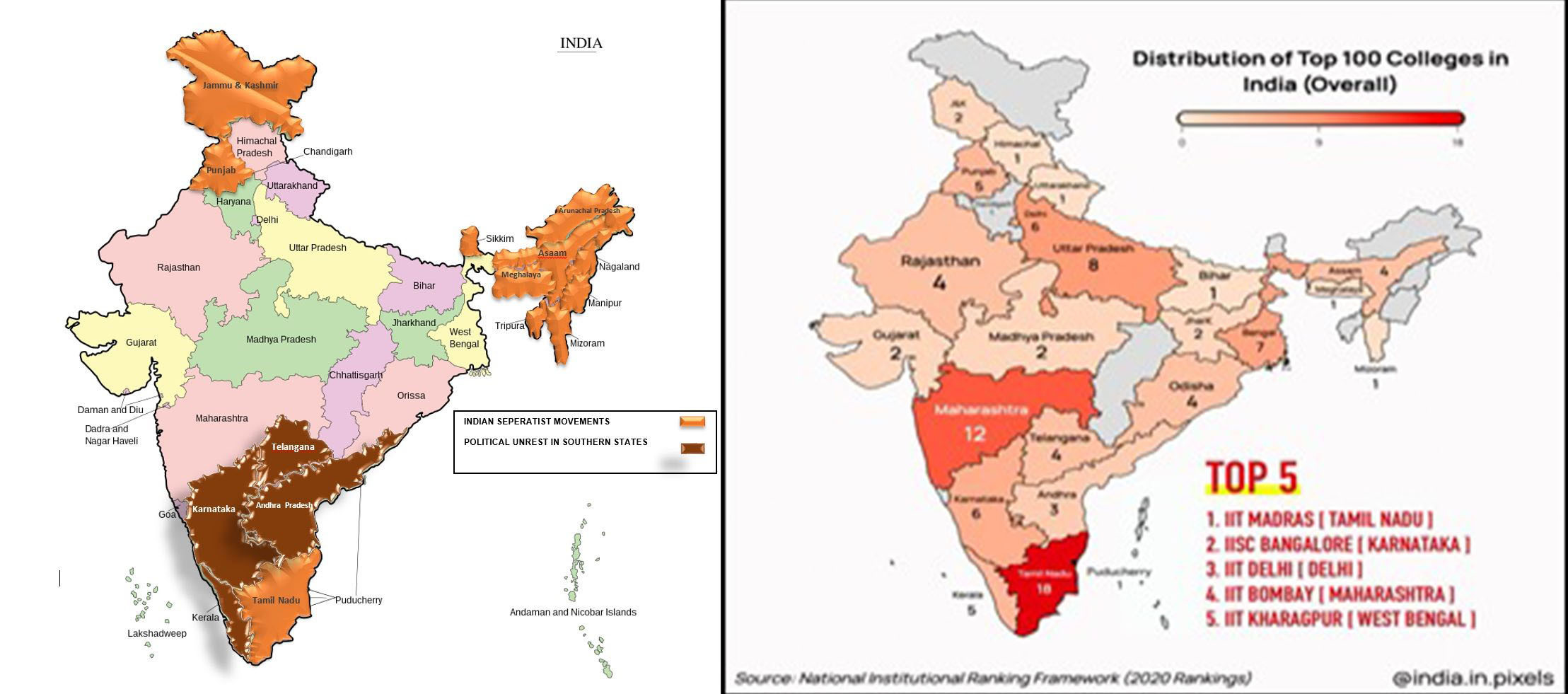
BJP is trying hard to hijack politics of the Southern states, which are far better than Northern States in terms of Law and Order, Per Capita Income, Taxation System, Literacy Rate, and Population Control. The effective population control by saner and educated southern states has in fact turned into worst nightmare which is going to haunt them in upcoming elections. From 1951 to 2022, population of southern states has decreased from 26 to 20 percent while that of Northern States has increased from 39 to 43 percent.
The literacy indicators can determine the educational and intellectual divide concerning the South and North as Northern states lag behind significantly in education and skill development. With an overall literacy rate of 60% in North against the 80% in South, there are scarcer engineering and technical institutes in the northern region. Although the engineering institutions in India is more than 1,500, the region-wide distribution of institutions and sanctioned intake of students shows significant regional disparity.
A large number of medical colleges are concentrated in the five states of South. These states account for about 63% of the medical institutions of India inside the Southern states. Correspondingly, permeation of public Industrial Training Institutes (ITIs) and privately-owned Industrial Training Centres (ITCs) which impart vocational training appears to be truncated in North India as compared to South.
Similarly, the higher literacy rate and lesser inclination of youth towards extremism in the South than Northern India can be identified from the fact that among the 100 leading colleges / universities (according to 2020’s estimates) across the country, 43 of them including IIT Madras, IISC Bangalore, Bharat University of Chennai, and the Institute of Chartered Financial Analysts of India (Hyderabad) are in South and only 37 universities are in states of North India despite their mammoth population.
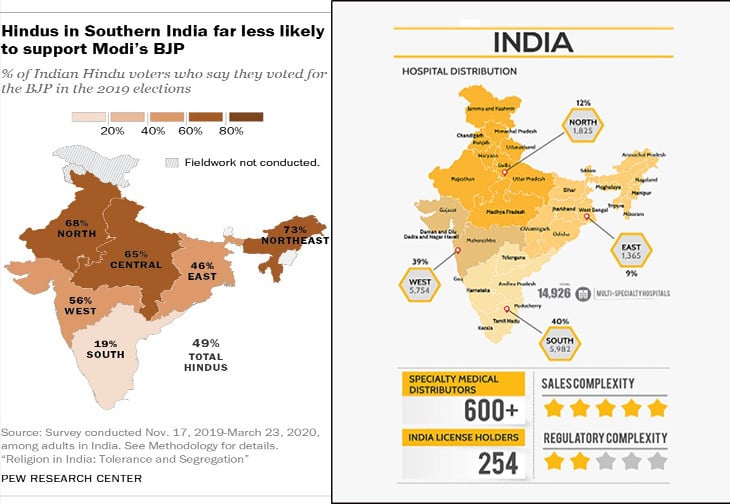
Definitely, the amalgamation of higher education and low population growth rates justifies the upper position of infrastructural development in the South rather than overall states of North. North-South India Divide & differences on basis of the infrastructural differences became debatable topics when ex-Chief Minister of Karnataka, Siddaramaiah raised the issue of North developing at South’s expense. Siddaramaiah stated that, “Historically, the South has been subsidising the north. Six states south of the Vindhyas contribute more taxes and get less.” Further added that, “While I recognise the need for correcting regional imbalances, where is the reward for development?” It is evidence of the fact that progress in terms of infrastructure actually do not give a proper due share in shape of return from the Union Grant / Treasury.
South India has witnessed robust economic growth, driven by sectors such as IT & software services, manufacturing, textiles & tourism. Cities like Bangalore, Chennai, Hyderabad have emerged as major economic hub. So, one can emphasise that 12 of the 30 leading and high-revenue generating special economic zones (SEZs) of India are in South India, while 9 being developed at the expense of development of Southern India are in North (reference: Asia Briefing Ltd.). Coming to the point of India’s IT industry, major IT parks exist in the South state of Karnataka, Bengaluru city. Due to which the city had earned the name of being the “Silicon Valley of India”.
In field of health, the difference between the South India and the North India is as blatant as that amongst the developed regions like Europe and the underdeveloped regions like the sub-Saharan Africa. As the matter of fact, there are 1,825 hospitals present in the Northern states while 5,982 hospitals exist in South India.
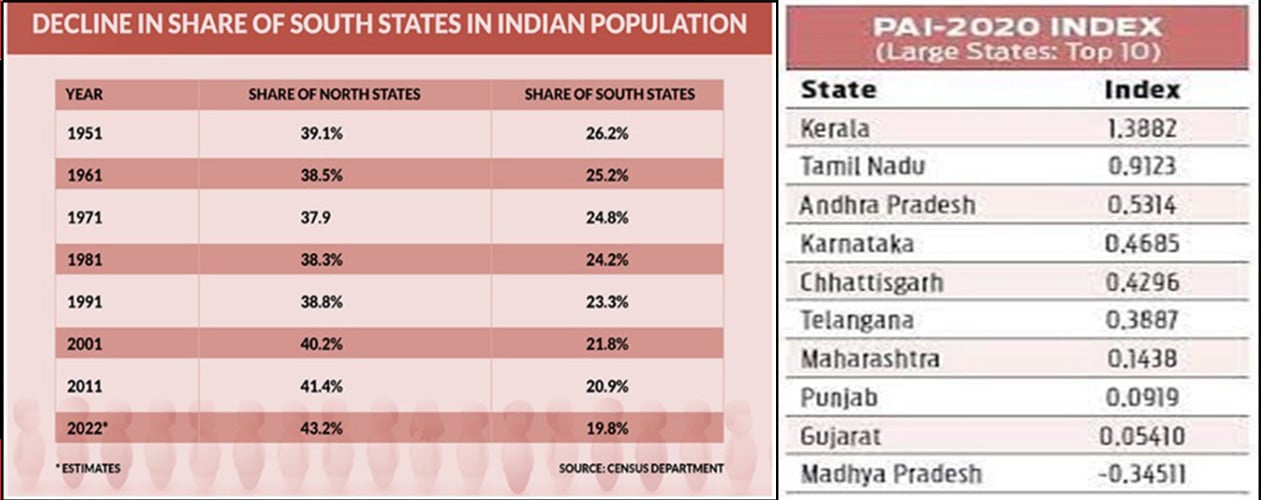
According to the PAI-2020 index, Southern states have outshined the north states in well-governed states status. This expounds rising extremism and crime rate in northern states due to the widespread political polarisation and hate being disseminated against minorities by Hindu extremist elements.
Indian North primarily UP and Bihar is 26% of India and the driver of project RSS / BJP / Hindutva. However, its contribution to Indian tax is only 3% whereas its 30% population is living below poverty line. Whereas, Indian South which include Tamil Nadu, Kerala, Karnataka, Telangana, Andhra Pradesh and the union territory of Puducherry, they contribute 25% to Indian tax income and 92% of the population lives above poverty line. Per capita GDP of the South is more than four times of improvised North. Very importantly, Indian South is not as bigoted and straight jacketed as North is.
Higher literacy and better economic developments speak of nature & characteristics of people in the Southern states. They are more enlightened, liberal and democratic. This nature and characteristics in the Southern states has rejected the extremist Hindutva ideology of BJP, evident from political parties representing in the state assemblies.
BJP – RSS is ruthlessly following their fascist Hindutva ideology aimed at making India ‘Akhand Bharat’. For this ideology to succeed, the compulsion is elimination of all dissentions, and in that context, Southern States are the biggest challenge for fascist Modi Regime.
Evidently, Modi’s BJP is faced with the embarrassment of losing state elections in the Southern States, and decrease in popularity as per the Karnataka’s 2023 polls. However, Modi’s agenda of gaining an uncontested popularity to win the elections of 2024 and beyond has started taking its toll. They have come up with a cunning plan.
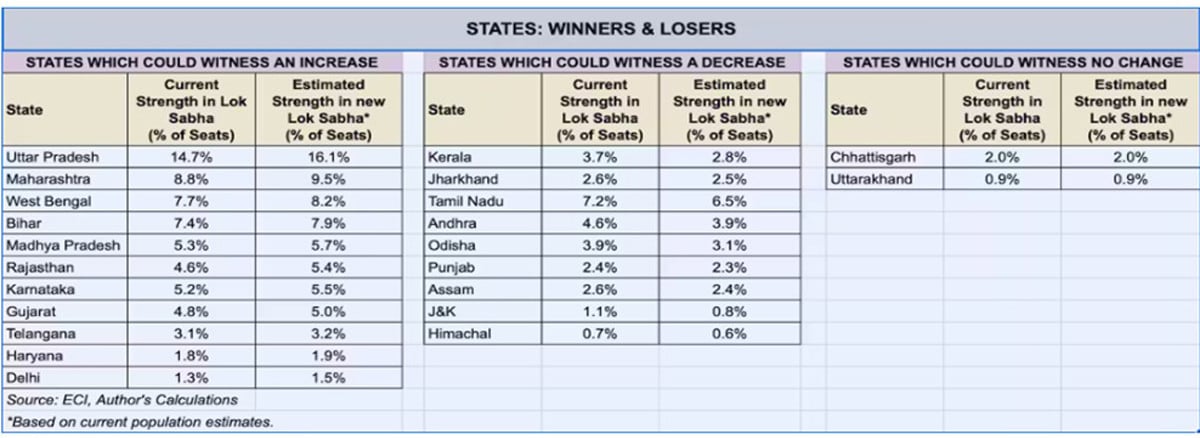
The India to “Bharat” tantrum and “One Nation - One Election” mantra is being propagated to achieve fascist ideology objectives. For political objectives, Modi intends to alter the number of assembly seats in the North and South in favour of BJP, to which he is already working on. Major step in this direction is ‘Delimitation Act’ (A Catastrophe for Southern States).
Indian Constitution was amended in 1976 to freeze Lok Sabha's expansion until 2001. In 2001, 84th amendment to the Constitution had extended the freeze on delimitation till 2026. Now in a bid to manipulate the number of seats, Women Seats Reservation Bill has been passed in Indian Parliament, implementation of which is linked to two conditions, Delimitation and Census. This delimitation is in reality, a vile endeavour to rob them of their legitimate political right.
If delimitation is implemented, the quota of Hindi belt will increase from 42 to 48 % and that of Southern states will decrease from 24 to 20%. Lok Sabha seats in Karnataka are expected to increase from 28 to 36, in Telangana from 17 to 20, Andhra Pradesh from 25 to 28, Tamil Nadu from 39 to 41 whereas in case of Kerala, number of its Lok Sabha seats will drop from 20 to 19. In contrast, the number of seats in Uttar Pradesh will go up from 80 to 128, in Madhya Pradesh from 48 to 68 and in Rajasthan from 25 to 44.

As a result, BJP would probably be the biggest beneficiary of Parliament’s expansion. Electorally, BJP wins most of its seats from the 10 Hindu heartland states. In the last general elections of 2019, it won 80 percent of its 225 seats i.e. 178 seats from northern states. The increase in number of seats of BJP dominated areas will further cement their grip in upcoming elections. A vivid illustration of this future distribution is new Parliament building which has provisions for 888 members in Lok Sabha as compared to current 543, and 384 members in the Rajya Sabhaha, as compared with 250 now makes the picture clear as to what BJP is aiming at. After its loss in the recent Assembly elections in Karnataka, the BJP has no State government in South India. Different parties lead the governments of the five States of the south: Dravida Munnetra Kazhagam in Tamil Nadu, Communist Party of India (Marxist) in Kerala, YSR Congress Party in Andhra Pradesh, Bharat Rashtra Samithi in Telangana, and Congress in Karnataka.
Leaders from South India have raised concerns on such political engineering by Modi Regime. CPI (M) Rajya Sabha member Dr. V. Sivadasan said that, “The BJP has systematically destabilised the Constitution and is now trying to superimpose a new political order by silencing the voice of dissent. Federalism has no place in the BJP’s future agenda—either you vote for Lotus or are doomed for resisting them.”
Ashok Swain, a leading Indian political scientist & expert on minority issues in India states that BJP had planned the building of new Parliament was to determine his long-term goals with ulterior motives.
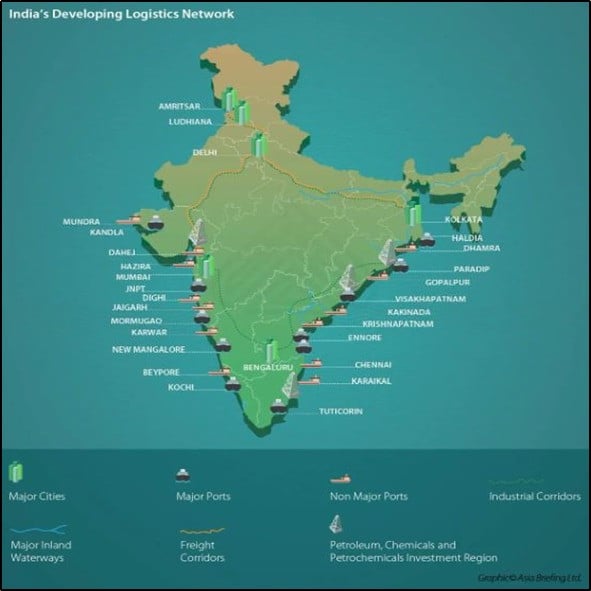

Leading Indian “Composite Nationalist” and leader of the “All India Majlis-e-Ittehad-ul-Muslimeen (AIMIM)”, Asaduddin Owaisi, whose party is also a major player from Telangana state criticised the manoeuvring of constituencies with the point that, “Can’t penalise states which are controlling population”.
Shashi Tharoor, Congress’s Member of Lok Sabha and one of the most vocal politicians of Kerala, pointed about the North-South divide in these words, “The only remedy is to acknowledge that we need a more decentralised democracy, one in which the central share of tax resources is not so crucial, and the political authority of New Delhi not so overwhelming. That could make the concerns raised by the new census figures less relevant. But as long as our system is what it is, we need to run it sensitively. That is something that the Modi government has failed to do. Such concerns should ignite deep disquiet among all well-wishers of Indian democracy, and all inclusive-minded Indian nationalists.”
Delimitation is considered as a “Damocles Sword” hanging over Southern states of India as reiterated by Muthuvel Karunanidhi Stalin, current Chief Minister of Tamil Nadu. He had openly criticised it with a point of being the “political conspiracy”.
'One Nation, One Election' is another proposal under consideration by the government of India to synchronise elections for the Lok Sabha (the lower house of the Indian Parliament) along with state assemblies in all of the Indian states or territories. It proposes to hold these elections at the same time, either on a single day or within a specific time frame which have been declared as a step to “curb the additional costs” from public treasury.
Regional political parties along with local political groups collectively argue that having the two elections altogether would hamper their prospects because they can't compete with national parties in monetary funding and election strategies either. More than US $8.7 billion was disbursed in India’s 2019 Lok Sabha elections, making it the world’s most expensive, confirmed by the report of the “Centre for Media Studies”. And Modi’s BJP spent roughly half of that. Some of the politicians also stated this as a step towards dismantling of State system in India.
Former law minister Kapil Sibal said that “One Nation One Election will be the downfall of the Modi government” and besides North Eastern states, Khalistan and IIOJ&K will be another fault line to be exploited.

Besides political engineering, Modi’s Fascist Regime is blatantly embarked upon state terrorism strategy. In this regard, killing of Hardeep Nijjar is a message for all those who dare oppose BJP-RSS Hindutva ideology that dissident voices will be silenced by use of Hard Power.
Paradoxically, despite knowing these idiosyncrasies, West particularly US who boasts of being the champion of democracy and Wilsonianism has turned a blind eye to Hindtuva Centric BJP Government of India in exercising her unbridled, unscrupulous hard power because they require another Ukraine which they use as a patsy to humble China in the Asia-Pacific. On the other side, South Indians, with a docile, progressive, secular and cooperative outlook would not like to confront China, which does not fall in line with great design of International Actors.
Modi-BJP-RSS troika is definitely a better choice for the manipulation of Western motives to contain China as well-educated, civilised, commerce-oriented populace of South India is difficult to fall for Hindutva-based ideological considerations. Scholars like Nobel Prise-winning economist Amartya Sen from Kerala have already attributed advances in health and education to a combination of political mobilisation and to the state's syncretic culture. Others such as Prerna Singh, a political scientist, have cited sub-nationalism, the strong regional identity of the state as another possible reason in response to the North’s exploitation of South’s development and other progressing indicators. Eventually, this indicates that South India’s population will resist and rise against the extremist ideology of fascism and Hindutva being perpetuated by the BJP-RSS’s under Modi, a demagogue. Their resistance to Modi-BJP-RSS’s north dominated and militaristic centrifugal forces will pave a way for potential battle between the two extremes (North and South India), actually representing a clash between “Pen and Scimitar”.
The present political milieu in India makes it quite evident that South Indians have no plans to be subjugated by irresponsible and fascist leadership of BJP. The North–South animosity is likely to aggravate before upcoming elections as extremists BJP leaders will play every trick they have in their hands to consolidate their hold on power. Linked to this is “War rhetoric against Pakistan”. To gain popularity in upcoming elections, staging a false-flag operation against Pakistan is not a distant reality as maligning Pakistan’s name for their own clandestine moves has proved successful earlier as well for political polarisation and radicalisation of North in particular and complete India in general. They have already tried this formula albeit without any success in Uri and Anantnag by staging a so-called “Terrorists’ attack”. But one thing is evident, these are last gasps of a drowning, famished BJP which in a desperate last-ditch effort will inadvertently become a driver of India’s implosion, the omnipresent being the divide between North and South India.
Omay Aimen is a freelance contributor who writes on issues concerning national and regional security. She can be reached at omayaimen333@gmail.com
All facts and information are the sole responsibility of the writer
